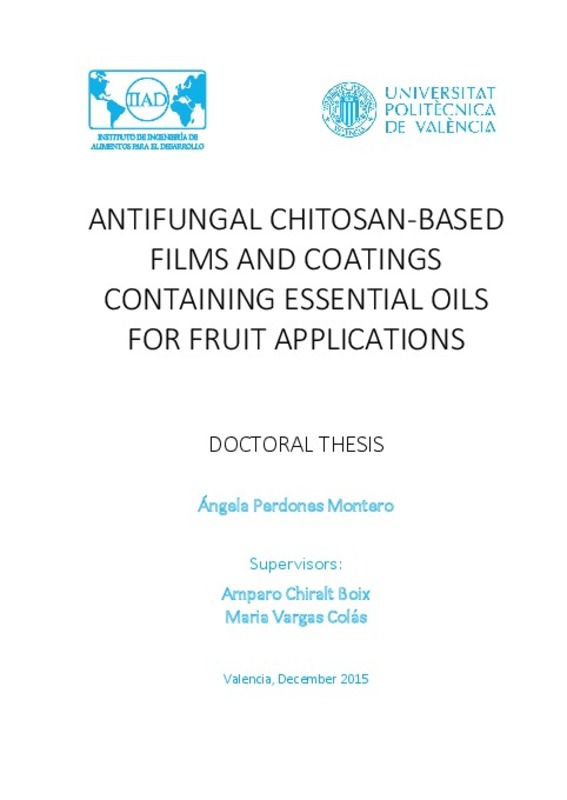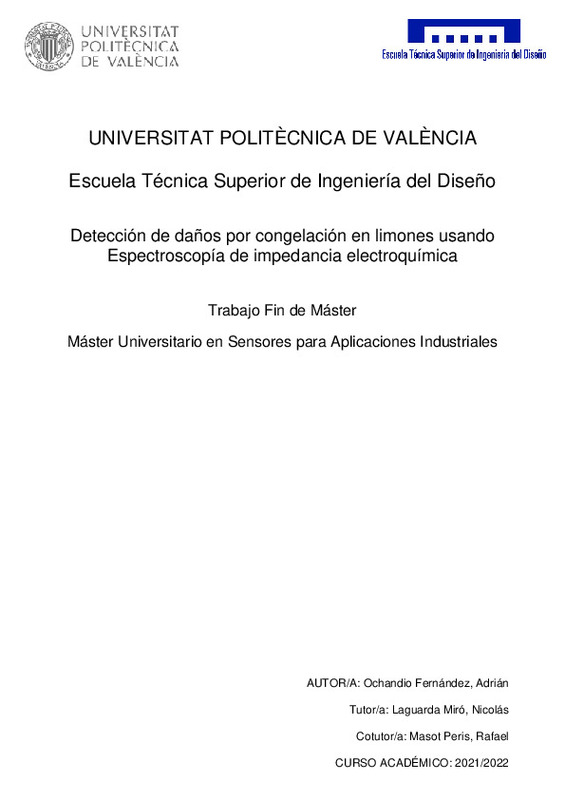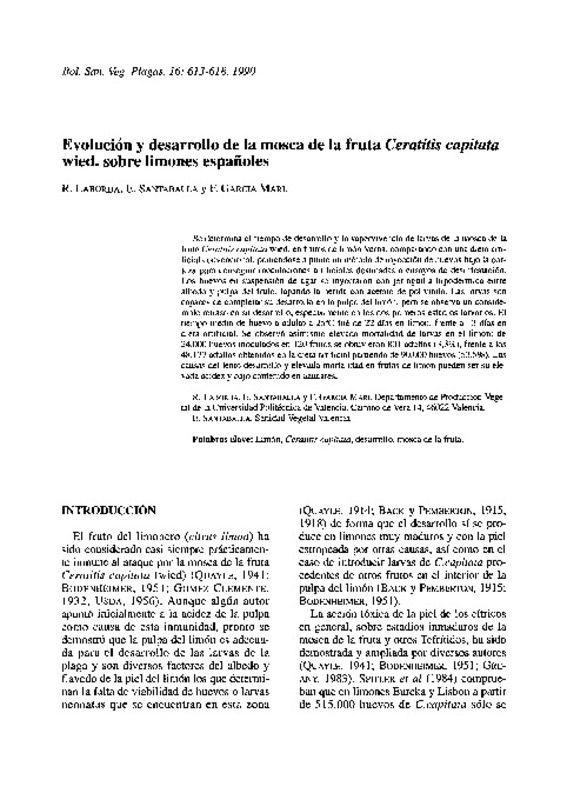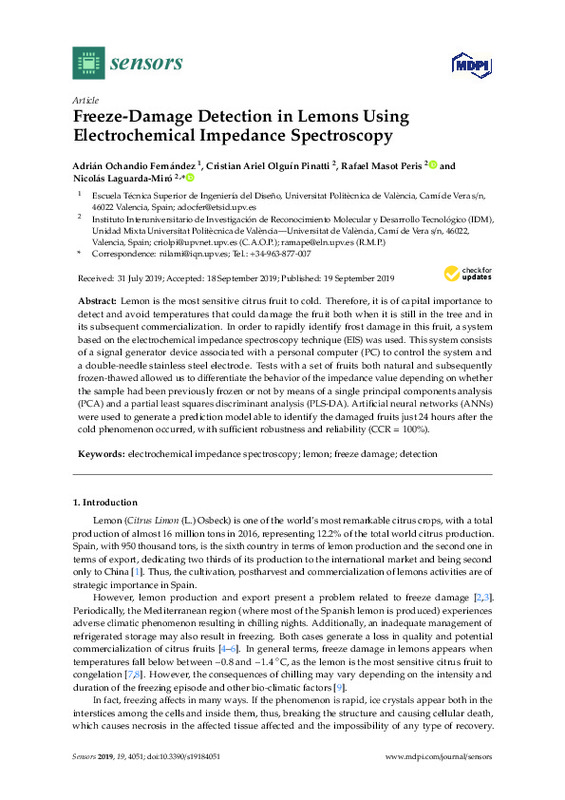

Listar por palabra clave "Lemon"
RiuNet: Repositorio Institucional de la Universidad Politécnica de Valencia
- RiuNet repositorio UPV
- :
- Listar por palabra clave
JavaScript is disabled for your browser. Some features of this site may not work without it.
Buscar en RiuNet
Listar
Mi cuenta
Ayuda RiuNet
Admin. UPV
Listar por palabra clave "Lemon"
Mostrando ítems 1-7 de 7
-
Perdones Montero, Ángela (Universitat Politècnica de València, 2016-12-15)[EN] Chitosan films and coatings have been obtained, by incorporating different essential oils (EO) and using different homogenization conditions of the film forming emulsions, in order to obtain antifungal materials for ...
-
Ochandio Fernández, Adrián (Universitat Politècnica de València, 2022-10-14)[ES] El limón es el cítrico más sensible al frío. Por lo tanto, es de vital importancia detectar y evitar temperaturas que puedan dañar el fruto tanto cuando aún está en el árbol como en su posterior comercialización. Con ...
-
Orquera Arguero, Karina Gabriela (Universitat Politècnica de València, 2017-11-27)Today global warming, climate change and greenhouse gas (GHG) production are topics of great interest as it has been found that different human activities, including agriculture and livestock, are an important source of ...
-
Laborda Cenjor, Rafael; Santaballa Lopez, Ernesto; García Mari, Ferran (Ministerio de Agricultura, Pesca y Alimentacion. Spain., 1990)[EN] The survival and development time of immature stages of the Mediterranean Fruit Fly Ceratitis capitata Wied in lemmon fruit is determined by comparison with a conventional artificial diet, and a method to inoculate ...
-
Ochandio Fernández, A.; Olguín Pinatti, Cristian Ariel; Masot Peris, Rafael; Laguarda-Miro, Nicolas (MDPI AG, 2019)[EN] Lemon is the most sensitive citrus fruit to cold. Therefore, it is of capital importance to detect and avoid temperatures that could damage the fruit both when it is still in the tree and in its subsequent commercialization. ...
-
Rubio Arraez, Susana; Capella Hernández, Juan Vicente; Ortolá Ortolá, Mª Dolores; Castelló Gómez, María Luisa (Wiley, 2015-09)Lemon slices were osmotically dehydrated using the following healthy sweeteners as osmotic agents: tagatose, isomaltulose, oligofructose and aqueous extract of stevia. A kinetic study using a Fickian approach was performed, ...
-
Rodriguez, Ana; San Andrés Aura, Victoria; Cervera, Magdalena; Redondo, Ana; ALQUÉZAR, B; Shimada, Takehiko; Gadea Vacas, José; Rodrigo, Maria Jesús; ZACARIAS, Lorenzo; Palou, Lluis; Lopez, María M.; Catañera, Pedro; PEÑA GARCIA, LEANDRO (American Society of Plant Biologists, 2011-06)[EN] Plants use volatile terpene compounds as odor cues for communicating with the environment. Fleshy fruits are particularly rich in volatiles that deter herbivores and attract seed dispersal agents. We have investigated ...
Mostrando ítems 1-7 de 7

Universitat Politècnica de València. Unidad de Documentación Científica de la Biblioteca (+34) 96 387 70 85 · RiuNet@bib.upv.es








